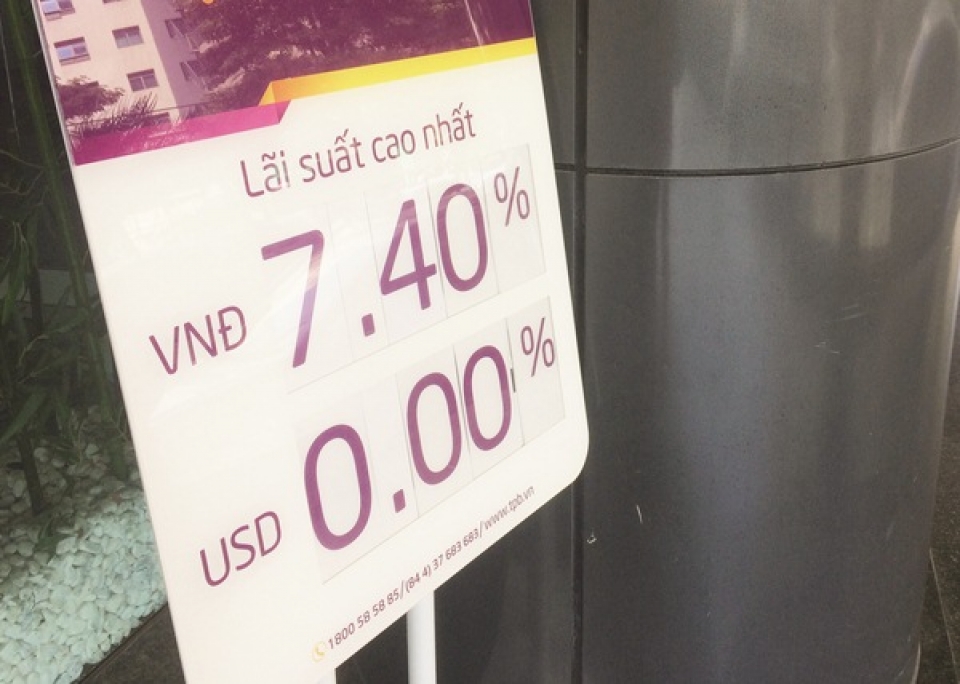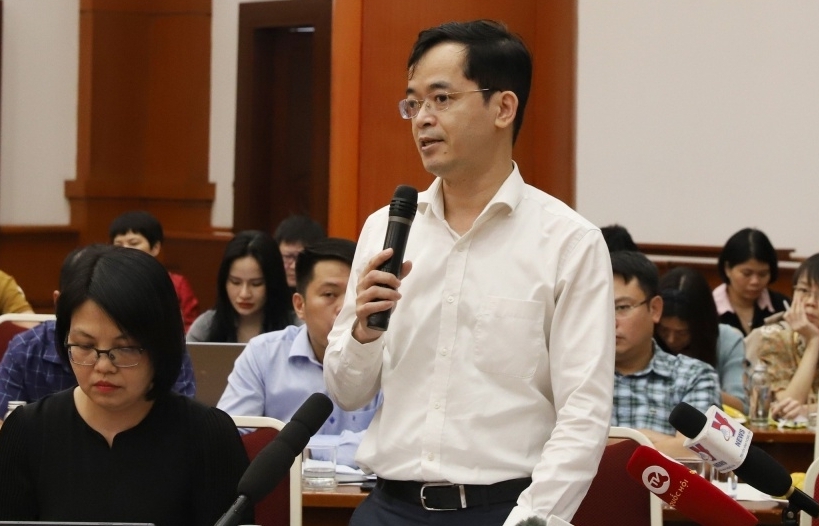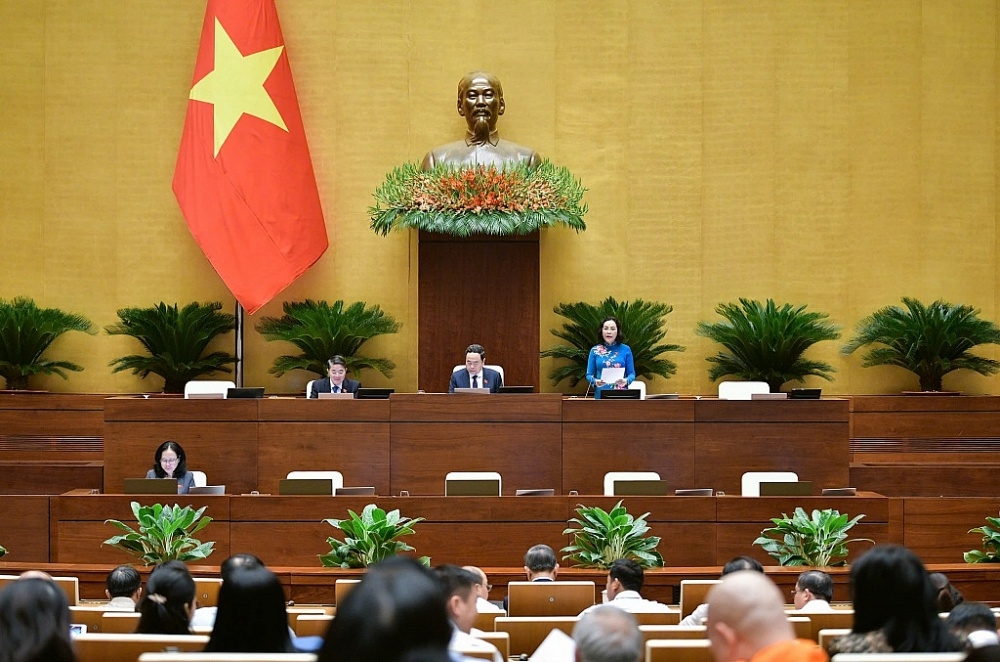Bank interest rates: Not seen the signals of reducing, but increasing
 |
| Interest rates are unlikely to fall as expected. Photo: H.Diu. |
Conditions are still difficult
It can be seen that in the early months of 2018, the money market - banks will inherit support factors from 2017 that should remain stable and have good growth. As a result, the Government and the State Bank of Vietnam (SBV) have finally come up with more requirements to continue reducing lending rates to suit economic conditions, focusing on priority areas and the business sectors. As a result, enterprises have been optimistic about the interest rate trend since the beginning of the year, especially when the bad debt treatment has had a positive impact from the Resolution on piloting bad debts of credit institutions by the Congress, helping to open up capital for the economy.
From these signals, in the first two months of 2018, many banks reduced interest rates on loans from 0.5-1% per year to about 6% per year, but only for the priority sectors as stipulated by the Government, while the rest of the majority of borrowers are not eligible in this concession. Currently, the lending interest rate for normal business lines is 6.8-9% per year for short term; 9.3-11% per year for medium and long term.
Although the economic situation has many prospects, experts said that there are two "unpredictable" variables of the monetary and financial market, which are the exchange rate and interest rates, because of the unpredictable impact of the economy from inside and outside; In particular, "variable" interest rates are both difficult to predict and there are not many favorable conditions to reduce support. Difficulties were pointed out: inflationary pressures, USD interest rates tended to increase as the US Federal Reserve (FED) continued to raise interest rates, pressured banks to raise capital.
According to the report on financial market of Saigon Securities Inc. (SSI), after 3 months of positive signs to April, the situation has changed markedly with less liquidity in the banking system, and interest rates began to move with an upward trend.
Further analysis of this issue, financial - banking expert Dr. Nguyen Tri Hieu, said that the Government and the SBV intend to cut interest rates by the end of the year, but the two interest rates are input and output interest rates. The current situation is that some big banks are trying to reduce interest rates, but medium and small banks need to continue to raise capital to support credit growth, so interest rates are up slightly.
Operation should be flexible
Report on the monetary policy in recent years, Mr. Pham Thanh Ha, Department of Monetary Policy (SBV) said that interest rates have dropped sharply since 2012 and kept stable in 2017, interest rates for priority sector loans continued to decline. However, in order to maintain such stability in 2018, it will be challenging with having many influencing factors, which require closer coordination between monetary policy, fiscal and price control policies of the State. Therefore, in the context that inflation is under control, stable market and favorable macroeconomic conditions, the State Bank of Vietnam will persist in operating the monetary policy instrument, supporting credit institutions to reduce the lending interest rate on the basis of ensuring safe and sound financial operation.
Of the same opinion, Dr. Nguyen Tri Hieu said that the banks still have many difficulties, so they need to keep reasonable input-output gap for profit as well as increase risk reserves, especially in dealing with bad debt. Therefore, the reduction of interest rates may be based on the State Bank of Vietnam when the SBV has many monetary policy tools to ensure and adjust interest rates. For example, with interest rates rising, the SBV can pump more money to create liquidity to regulate interest rates. In addition, the SBV may reduce the operating interest rates to reduce interest rates; use the fiscal policy, reduce the interest rate of government bonds to support the general interest rate.
In addition, to reduce interest rates, experts say that what is needed is to remove the "knot" on bad debt. Although there are better conditions for handling, but according to financial expert - banker Dr. Canh Van Luc, it must be more drastic and synchronized in handling, to speed up the process of handling bad debt. At this point, there are still many obstacles of valuations at auctions, the combination of related agencies and the market for bad debt has not been properly developed. Therefore, on one hand to solve problems, on the other hand we should ensure the quality of credit growth to avoid emerging bad debt; clearly, banks are putting a lot of money on risk provisions to deal with bad debt. As a result, interest rates will be reduced when resources from bad debts are released.
In monetary policy, a problem that many experts have warned is that the State Bank is under pressure to achieve a multi-objective monetary policy while ensuring control of inflation, credit growth contributes to GDP growth; As a result, there is a great caution between the two options for easing monetary policy to support growth and ensure sustainable development. As a result, the monetary policy as well as the interest rate in the coming time needs stronger steps, in which interest rates need to decrease further so that businesses and the economy have more incentive to develop.
Related News

The economic situation continues to trend positively
11:36 | 07/08/2024 Headlines

Transparent and stable legislation is needed to develop renewable energy
13:45 | 01/08/2024 Import-Export

The Government plans to borrow maximum of VND676,057 billion and repay debt of VND453,990 billion in 2024
10:39 | 04/04/2024 Finance

Personal Income Tax Law to be amended in 2025
10:42 | 04/04/2024 Finance
Latest News

M&A activities show signs of recovery
13:28 | 04/11/2024 Finance

Fiscal policy needs to return to normal state in new period
09:54 | 04/11/2024 Finance

Ensuring national public debt safety in 2024
17:33 | 03/11/2024 Finance

Removing many bottlenecks in regular spending to purchase assets and equipment
07:14 | 03/11/2024 Finance
More News

Continue to handle cross-ownership in banks
10:35 | 02/11/2024 Finance

Striving for average CPI not to exceed 4%
16:41 | 01/11/2024 Finance

Delegating the power to the government to waive, lower, or manage late tax penalties is suitable
16:39 | 01/11/2024 Finance

Removing difficulties in public investment disbursement
09:30 | 31/10/2024 Finance

State-owned commercial banking sector performs optimistic growth, but more capital in need
09:28 | 31/10/2024 Finance

Stipulate implementation of centralized bilateral payments of the State Treasury at banks
09:29 | 29/10/2024 Finance

Rush to finalize draft decree on public asset restructuring
09:28 | 29/10/2024 Finance

Inspection report on gold trading activities being complied: SBV
14:37 | 28/10/2024 Finance

Budget revenue in 2024 is estimated to exceed the estimate by 10.1%
10:45 | 28/10/2024 Finance
Your care

M&A activities show signs of recovery
13:28 | 04/11/2024 Finance

Fiscal policy needs to return to normal state in new period
09:54 | 04/11/2024 Finance

Ensuring national public debt safety in 2024
17:33 | 03/11/2024 Finance

Removing many bottlenecks in regular spending to purchase assets and equipment
07:14 | 03/11/2024 Finance

Continue to handle cross-ownership in banks
10:35 | 02/11/2024 Finance




